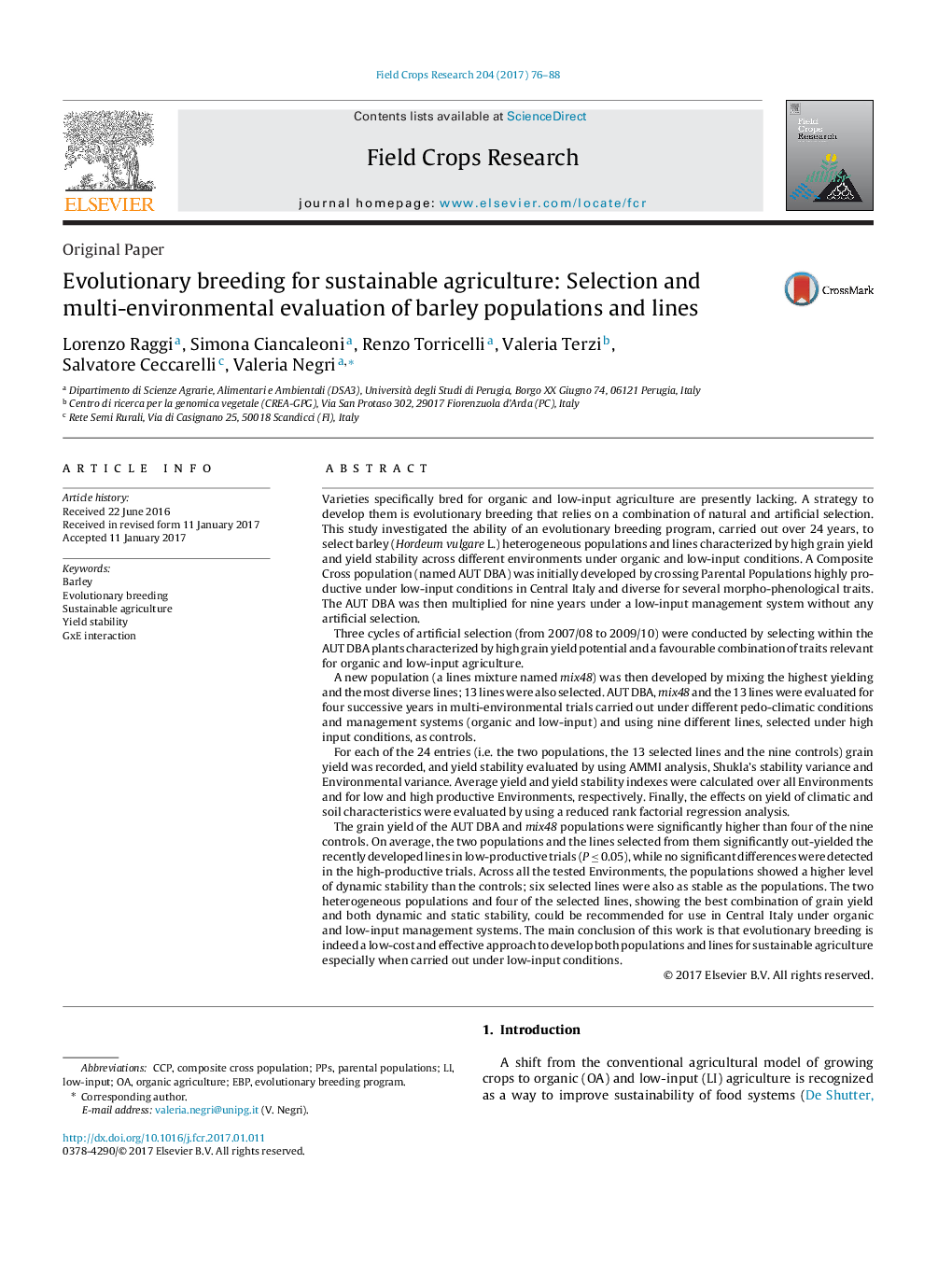| Article ID | Journal | Published Year | Pages | File Type |
|---|---|---|---|---|
| 5761611 | Field Crops Research | 2017 | 13 Pages |
Abstract
The grain yield of the AUT DBA and mix48 populations were significantly higher than four of the nine controls. On average, the two populations and the lines selected from them significantly out-yielded the recently developed lines in low-productive trials (P â¤Â 0.05), while no significant differences were detected in the high-productive trials. Across all the tested Environments, the populations showed a higher level of dynamic stability than the controls; six selected lines were also as stable as the populations. The two heterogeneous populations and four of the selected lines, showing the best combination of grain yield and both dynamic and static stability, could be recommended for use in Central Italy under organic and low-input management systems. The main conclusion of this work is that evolutionary breeding is indeed a low-cost and effective approach to develop both populations and lines for sustainable agriculture especially when carried out under low-input conditions.
Keywords
Related Topics
Life Sciences
Agricultural and Biological Sciences
Agronomy and Crop Science
Authors
Lorenzo Raggi, Simona Ciancaleoni, Renzo Torricelli, Valeria Terzi, Salvatore Ceccarelli, Valeria Negri,
